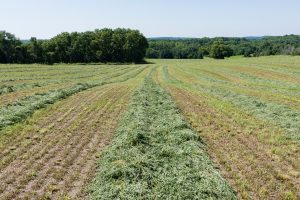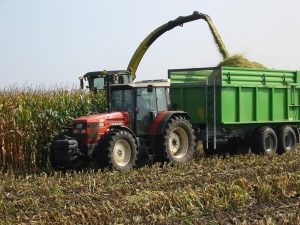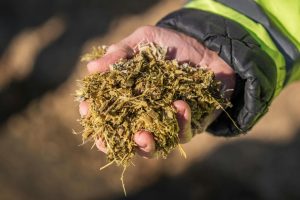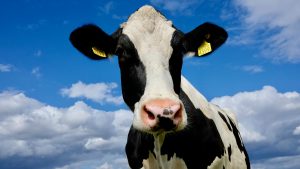Álvaro García
Producing forage is a question of transporting water. Fresh forages such as corn silage are 65–70% water, which means every truckload or shipload of silage represents a large movement of bound moisture (Garcia & Thiex, 2003). In a world of fluctuating fuel prices and high freight expenses, moving that much water over long distances is both economically and environmentally costly.
This challenge is especially pronounced in the arid and semi-arid regions of the Middle East, where water scarcity and government restrictions on cultivating water-intensive crops like alfalfa have shifted dairies toward imported feeds. Attempting to grow large volumes of green corn forage in these environments not only strains limited groundwater resources but also produces forage with high moisture content that is expensive to transport.
By contrast, in regions with abundant rainfall and fertile soils, such as parts of North America, Europe, and South America, producing corn silage is both agronomically sustainable and cost-efficient. In these areas, the crop can be harvested and either ensiled locally or dehydrated and compressed, reducing its moisture content and shipping weight (Muck, 2018). This process transforms corn silage from a bulky, perishable forage into a stable, transportable commodity, better suited for export to water-scarce dairy regions. Against this backdrop, dehydrated corn silage (DCS) has emerged as a potential solution for supplying dairy herds in the Middle East and similar dryland environments.
Characteristics of dehydrated corn silage
Dehydrated corn silage is produced by harvesting whole corn plants, chopping them, and subjecting the forage to a controlled dehydration process rather than conventional ensiling. The product is then compressed and packaged, often into bales or pellets, to facilitate handling and export. Its high dry matter content (typically 85–90%) reduces spoilage risks and extends shelf life, while the compressed form eases storage and transport. The dehydration process, however, is not without drawbacks. Heat exposure during drying can alter protein and starch structures, reducing their digestibility in the rumen if not effectively managed (Muck, 2018). Thus, DCS offers logistical advantages but raises questions about nutritional performance.
Research evidence
The most direct scientific evaluation of DCS comes from a study by Hisadomi and Oba (2022), who evaluated DCS as the primary forage in lactating Holstein cows. Using a Latin square design, they compared diets containing DCS with those based on whole-crop barley silage, each paired with either low- or high-starch concentrates.
Their findings were clear. Cows readily consumed DCS, with dry matter intake like those fed barley silage. However, milk yield was lower on DCS diets, regardless of starch level, and total-tract digestibility of starch and crude protein declined. While milk fat and protein percentages were unaffected, milk urea nitrogen concentrations were lower with DCS, suggesting altered nitrogen metabolism. Feed efficiency did not differ significantly.
The study’s strength lies in its careful design and comprehensive nutrient analysis, yet it also highlights limitations. Comparisons were made only with barley silage, leaving uncertainty about how DCS stacks up against conventional corn silage. Moreover, the trial was short-term and conducted under research conditions, which may not reflect commercial farm realities.
Comparative context
Conventional corn silage remains the benchmark forage in most dairy systems, valued for its high starch yield and ability to sustain milk production (Johnson et al., 1999). Unlike DCS, ensiled corn contains fermentation products such as lactic acid that help stabilize rumen pH and support microbial growth. The absence of these compounds in DCS may partly explain its lower starch and protein digestibility.
Alfalfa hay, by contrast, contributes more effective fiber and higher crude protein but lacks starch energy. Compared with these two familiar forages, DCS sits in an intermediate position. It provides more energy than alfalfa, but less effective fiber; it stores and ships more easily than conventional corn silage, but supports lower milk yield (Gencoglu et al., 2008). The trade-off is clear: DCS excels in coordination but underperforms nutritionally when compared with established forages.
Advantages, disadvantages, and constraints
The strengths of DCS lie primarily in its practicality. With most of its water removed, it is lighter and more compact than conventional silage, making it far easier to ship across oceans (Garcia & Thiex, 2003). Its shelf life is long, its microbial load is reduced by heat treatment, and industrial dehydration ensures a uniform product. These qualities make it attractive for dairies in arid regions that rely heavily on imported feeds.
Yet the same process that makes DCS transportable also diminishes its feeding value. Dehydration reduces starch and protein digestibility, and the absence of fermentation compounds alters its behavior in the rumen (Muck, 2018). Compared with traditional silages, it supports lower milk yields. It is also more expensive, as processing and long-distance transport adds costs. Finally, research is limited, with few peer-reviewed studies available to guide its use (Hisadomi & Oba, 2022).
Practical implications of dehydrated corn silage (DCS) in dairy rations | |
Aspect | Key Points |
Coordination | Highly transportable forage: useful in regions where water scarcity limits local forage production (e.g., Middle East). |
Nutrition | Palatable to cows but lower digestibility of starch and protein compared with conventional corn silage. |
Milk Yield | Supports lower milk production than high-quality ensiled forages, though milk fat and protein percentages are not significantly affected. |
Balancing Rations | It should be combined with long-fiber forages (alfalfa, straw) and high-quality protein sources to maintain rumen health and offset reduced protein digestibility. |
Cost Consideration | More expensive than locally produced forages but strategically useful in systems reliant on imported feeds. |
Best Use | Works best as a supplementary forage rather than a complete replacement for ensiled silages. |
Despite its logistical advantages, dehydrated corn silage (DCS) presents several nutritional and practical challenges that limit its role as a primary forage in dairy rations. The dehydration process exposes starch and protein to heat, which can trigger Maillard reactions and reduce ruminal digestibility. This explains why milk yields are generally lower on DCS diets compared with conventional ensiled corn. Furthermore, the absence of fermentation products such as lactic acid, normally present in silage, removes compounds that help stabilize rumen pH and promote microbial activity, potentially reducing starch utilization and altering fermentation balance. Although DCS retains fiber, its effectiveness is often lower than that of long-fiber forages such as alfalfa hay, increasing the need for ration adjustments.
Beyond the cow, the product carries economic and sustainability concerns. Industrial dehydration is highly energy-intensive, raising both processing costs and the carbon footprint relative to ensiling. Transport expenses further compound the issue, making DCS typically more expensive than locally produced forages or imported alfalfa hay. Availability is also limited, as only regions with surplus forage and dehydration facilities can produce it at scale, leaving users dependent on international supply chains and fluctuating fuel and freight prices. Finally, scientific evidence on DCS remains scarce, with most research limited to short-term trials. This creates uncertainty about long-term effects on lactation persistency, fertility, and herd health. For these reasons, DCS is best viewed as a strategic supplementary forage for water-scarce or forage-deficit regions rather than a substitute for conventional silages.
Research gaps
Despite its potential, DCS remains under-studied. Long-term trials are needed to assess impacts on lactation persistency, fertility, and cow health. Processing methods should be refined to minimize nutrient damage during drying. Economic evaluations comparing DCS with imported alfalfa hay or conventional silages would help clarify its cost-effectiveness in the Middle East (Muck, 2018). Finally, further studies on rumen microbial ecology could shed light on how DCS affects fermentation and microbial protein synthesis.
Bottom line
Dehydrated corn silage provides a strategic solution to the challenge of moving forage nutrients without transporting water, making it particularly valuable for dairies in water-scarce and forage-deficit regions. Its long shelf life, stability, and ease of shipping give it a clear logistical edge over conventional silage. However, these advantages come at the cost of reduced nutrient digestibility, lower milk yield potential, and higher processing and transport expenses. For these reasons, DCS should be viewed not as a replacement for high-quality ensiled forages, but as a complementary feed ingredient best employed where local forage production is limited and reliable imports are essential to sustaining dairy operations.
The full list of references used in this article is available upon request.
© 2025 Dellait Knowledge Center. All Rights Reserved.








